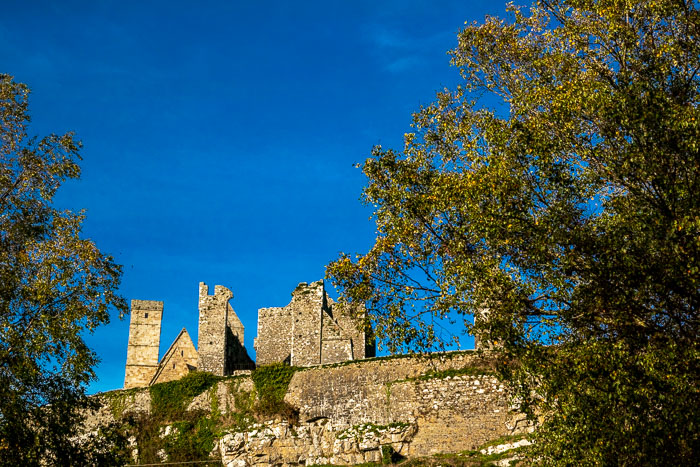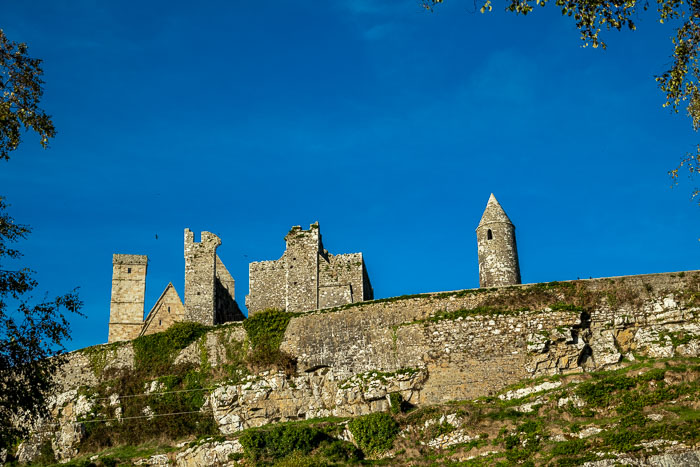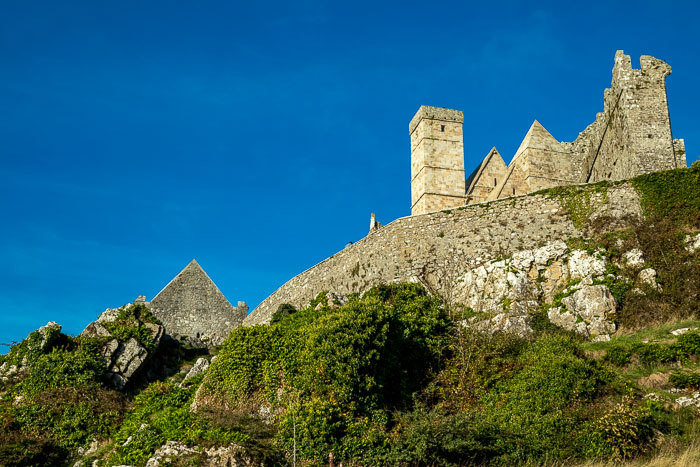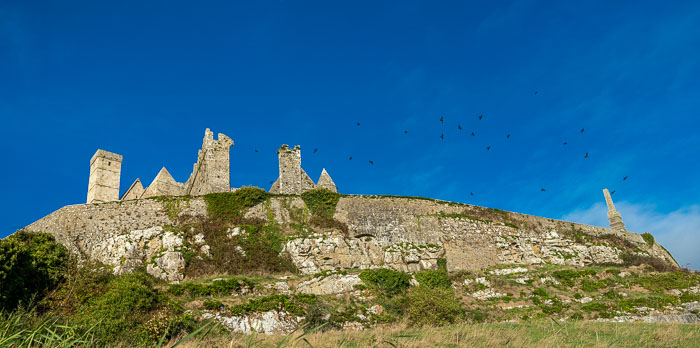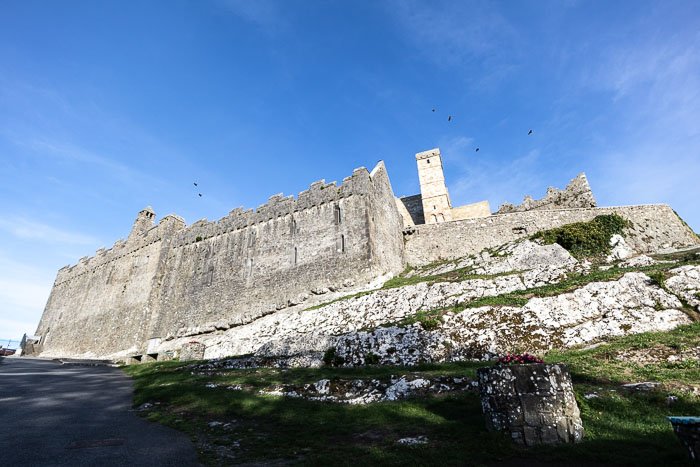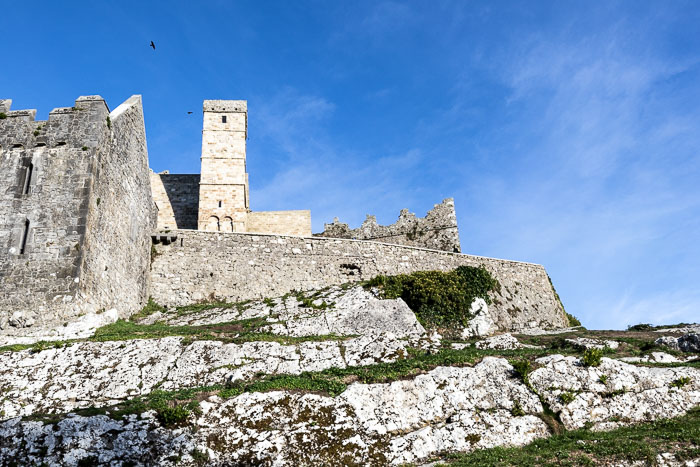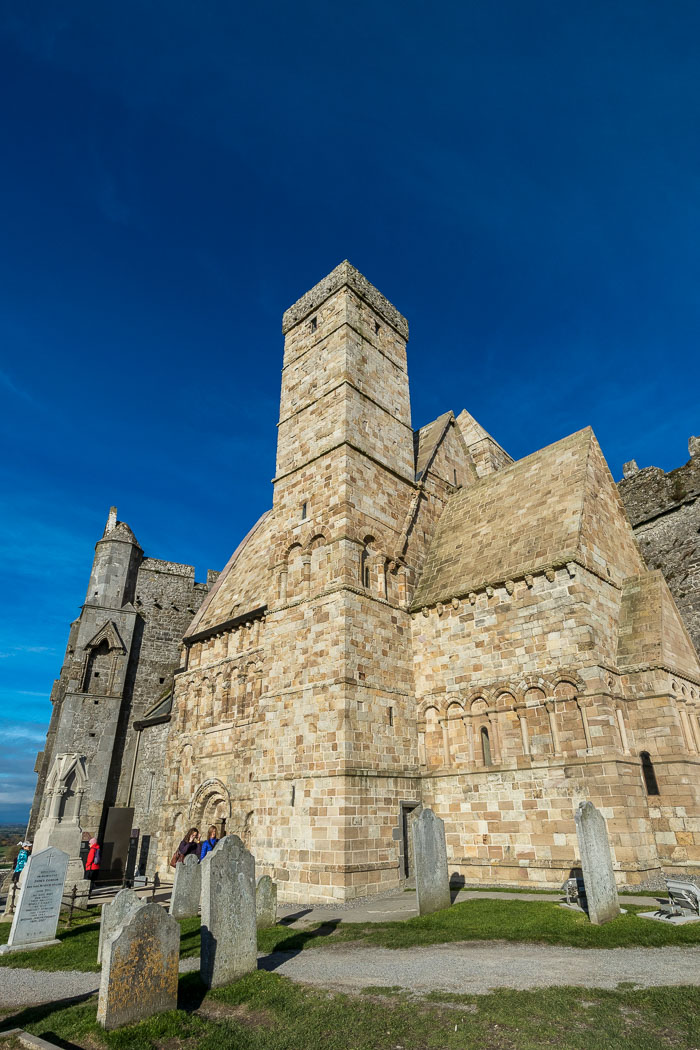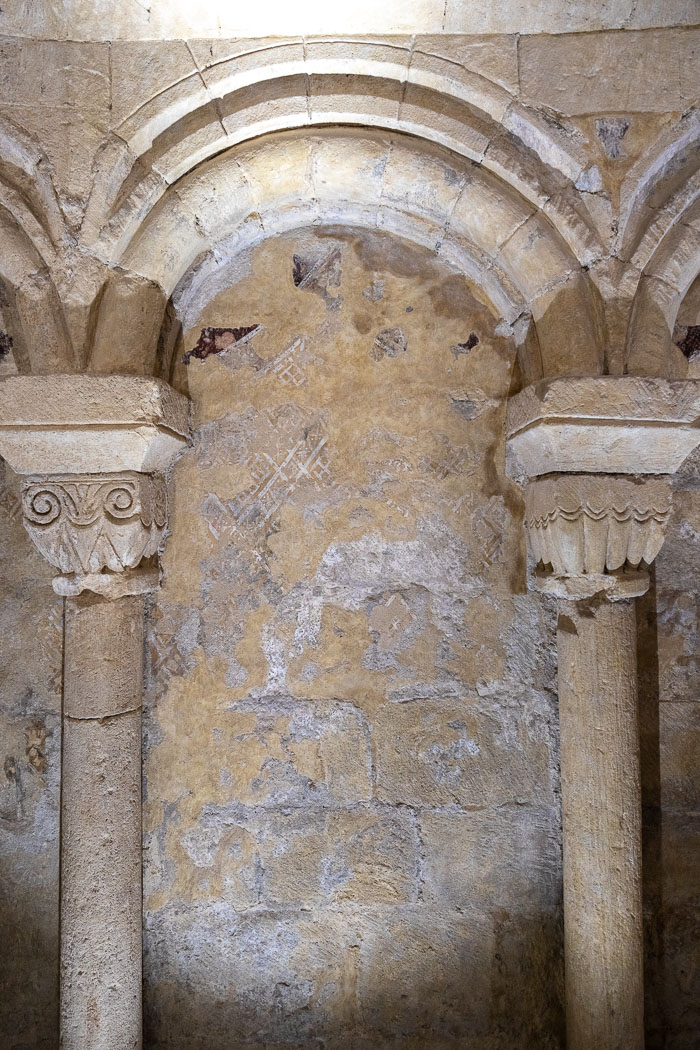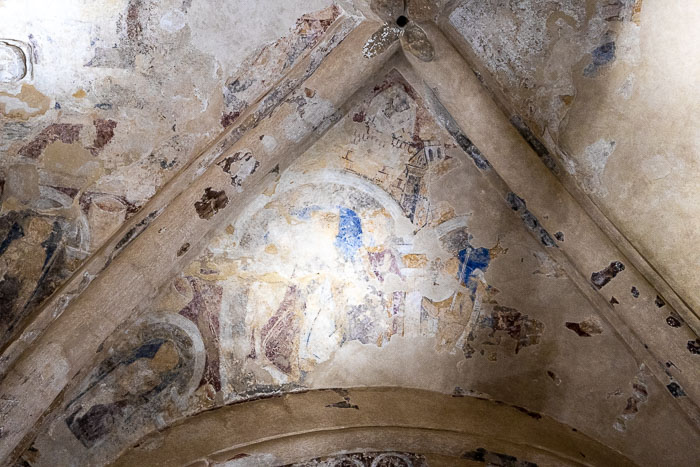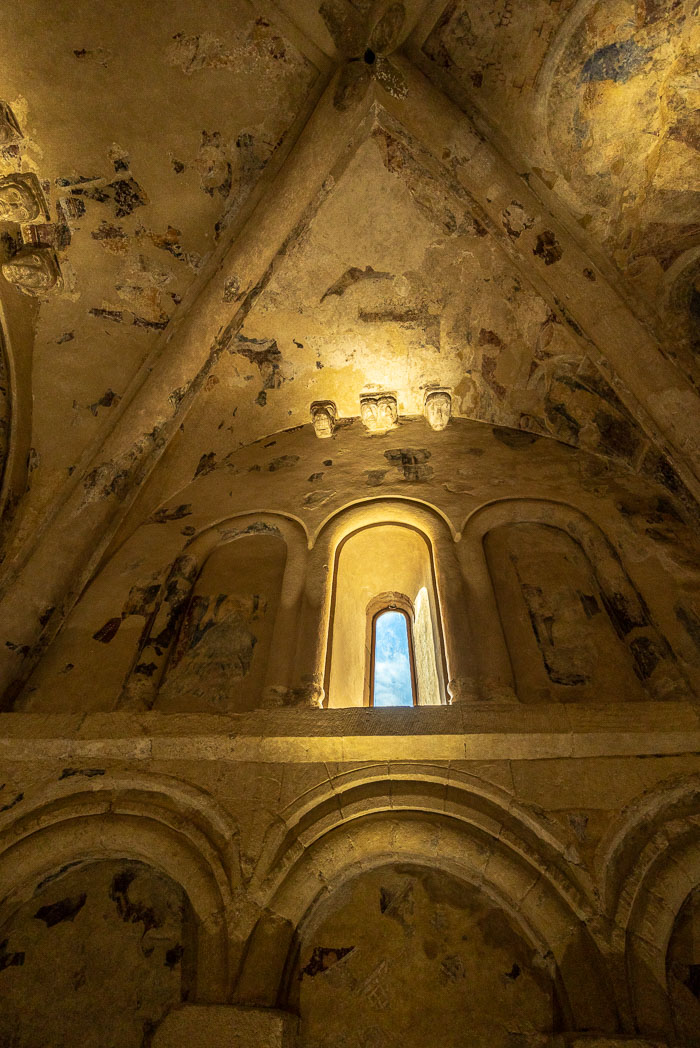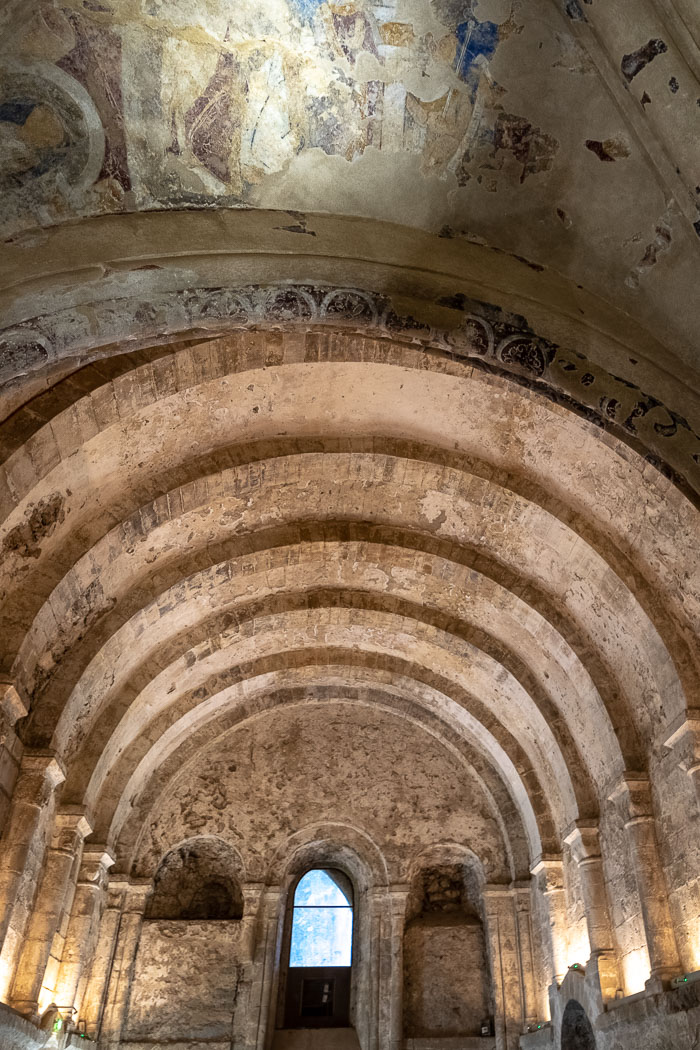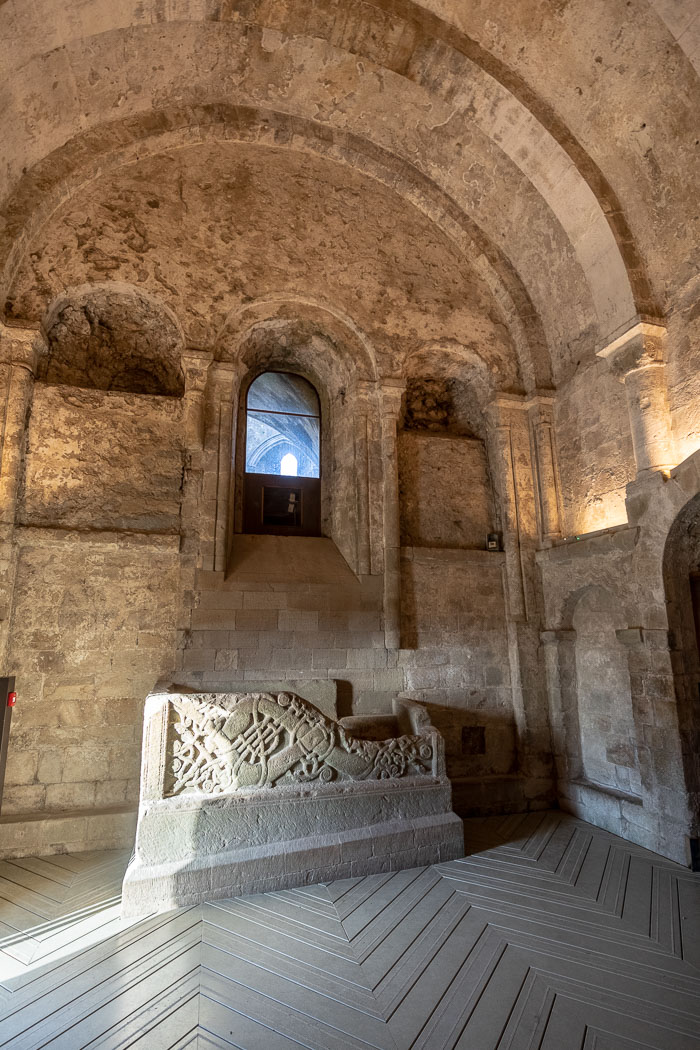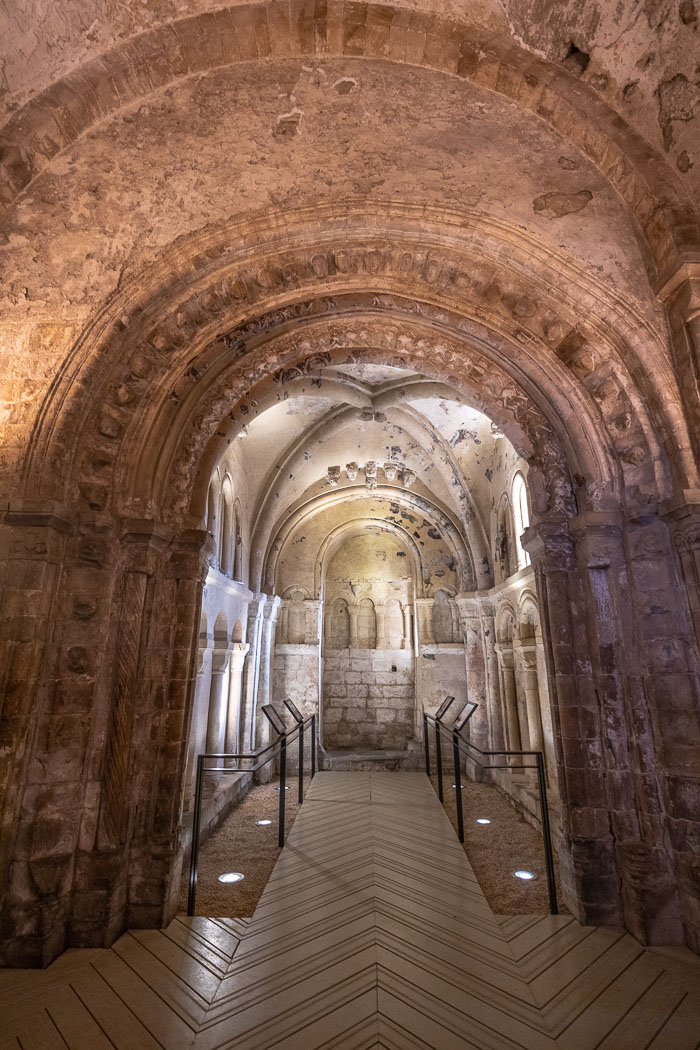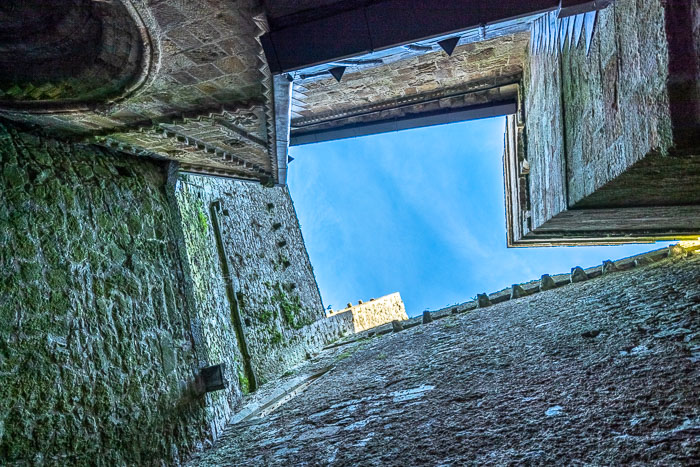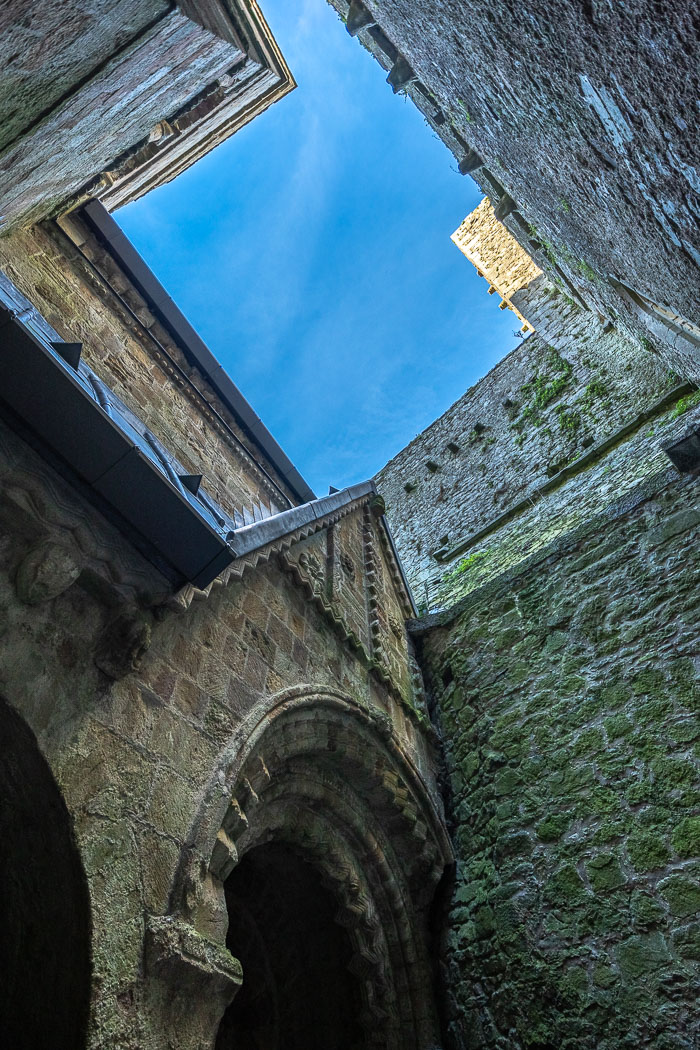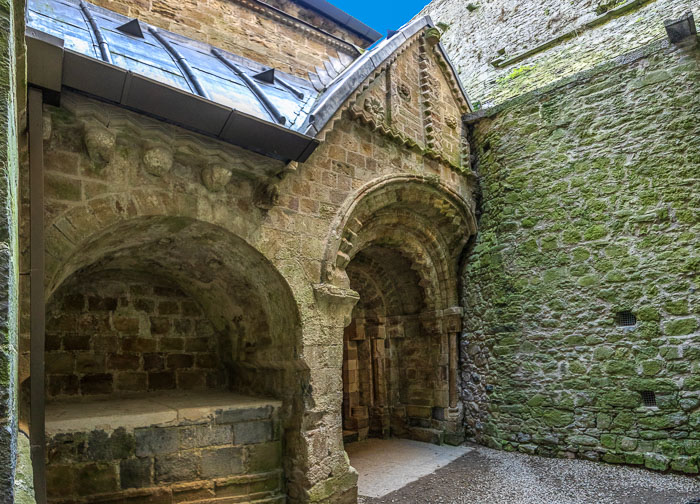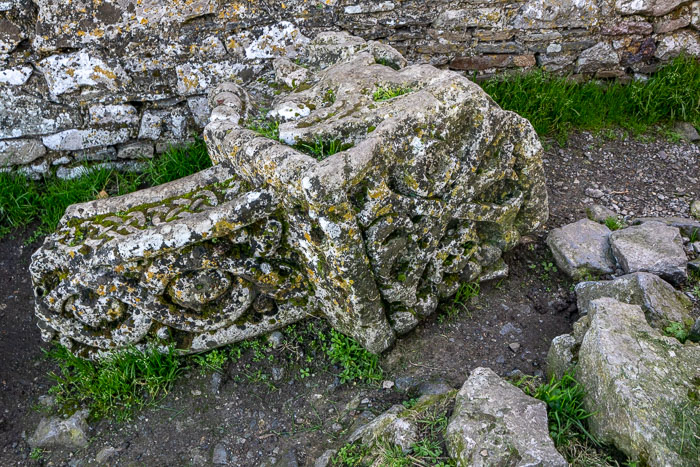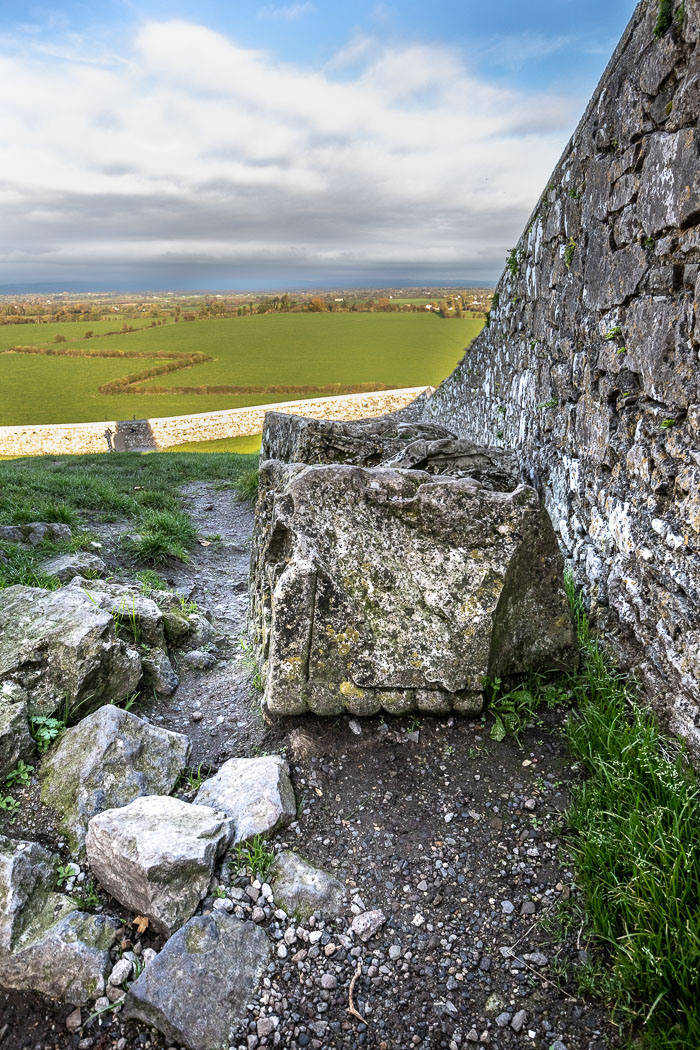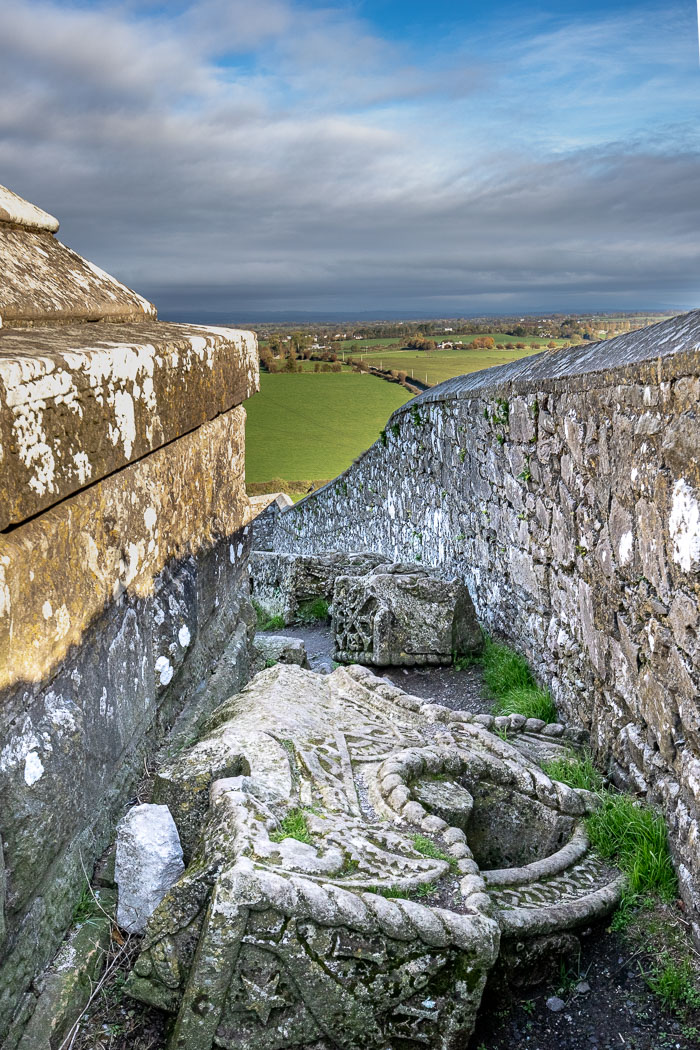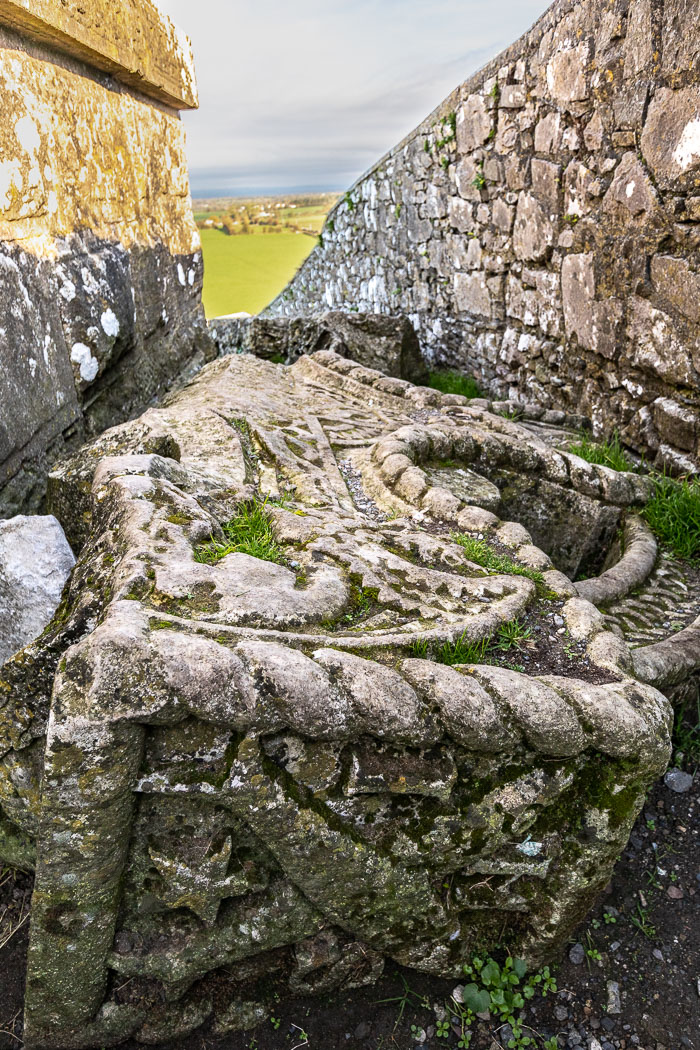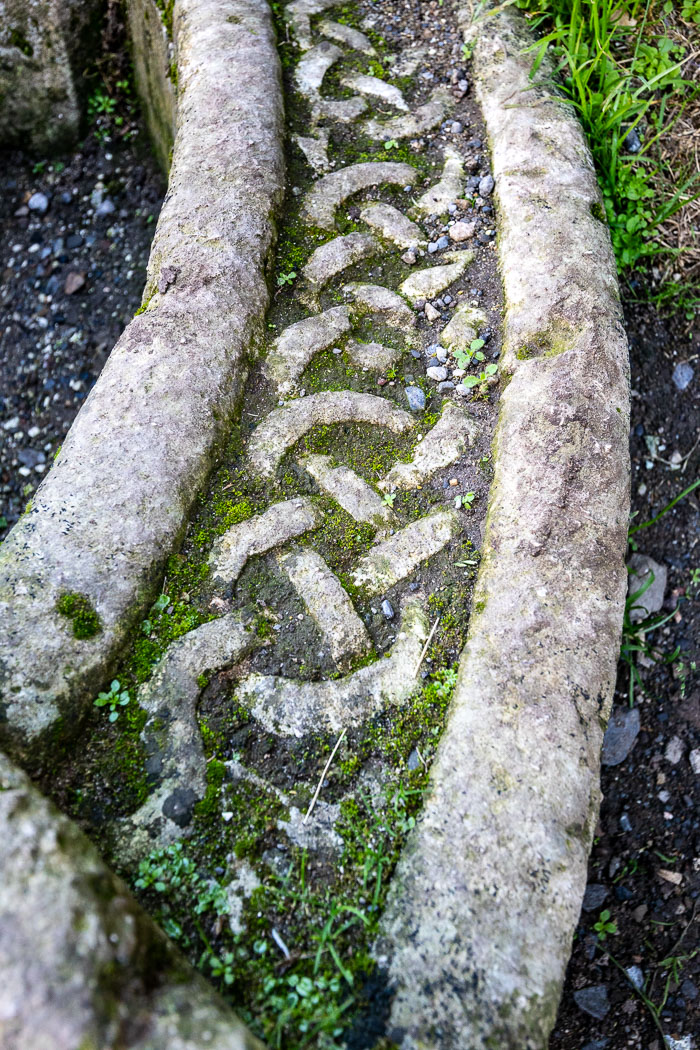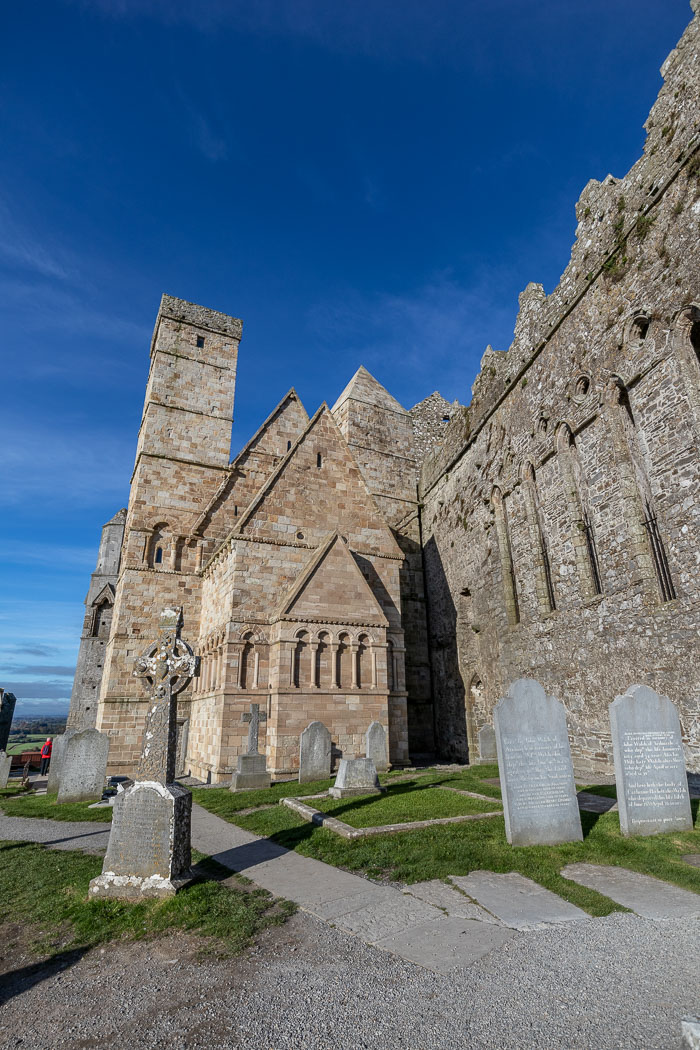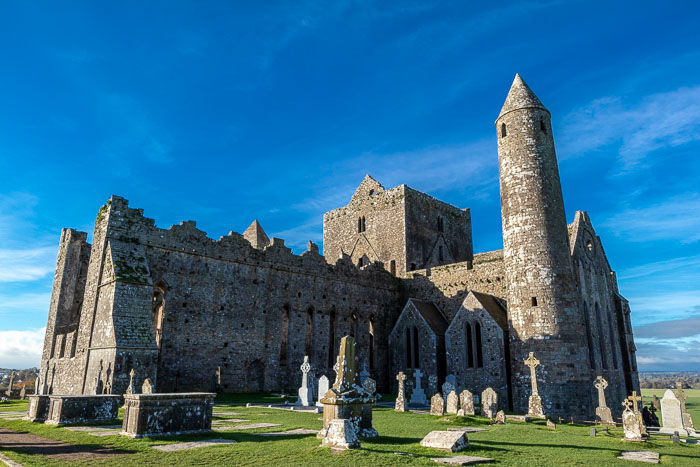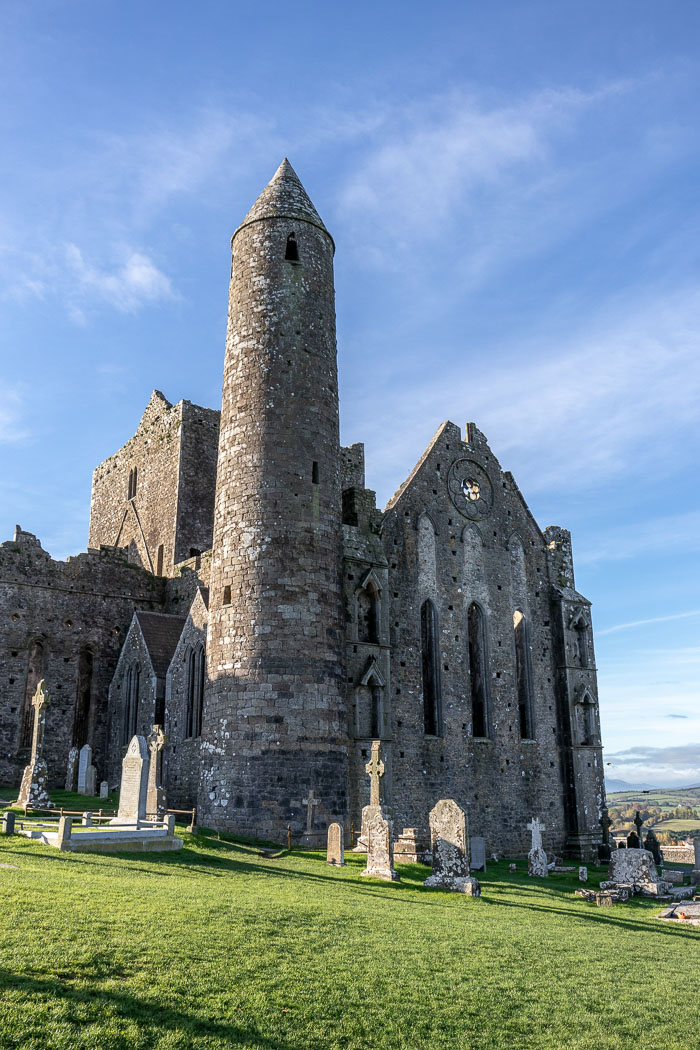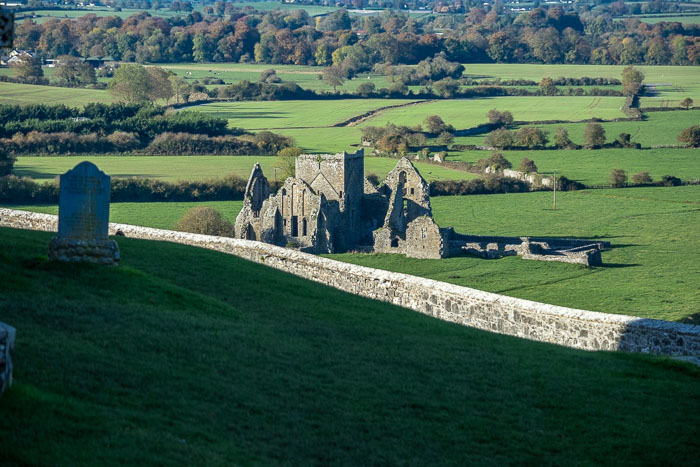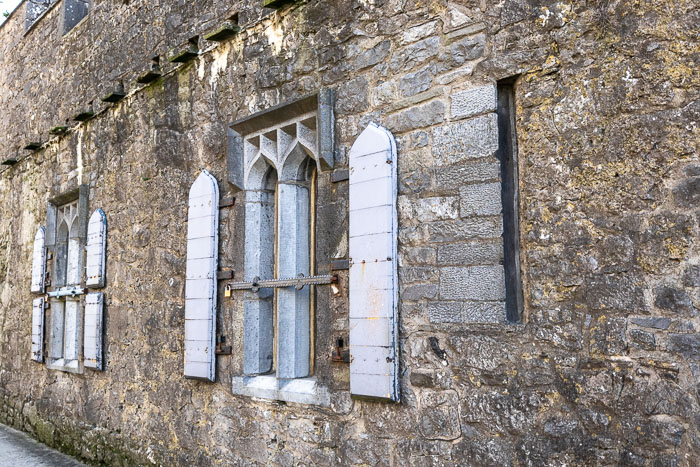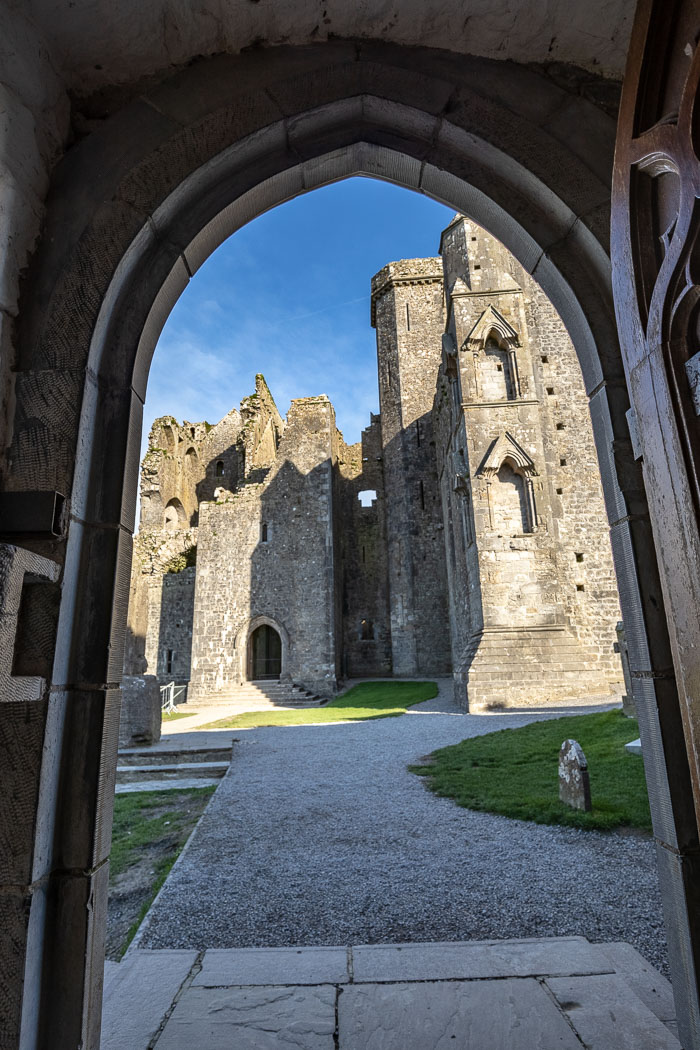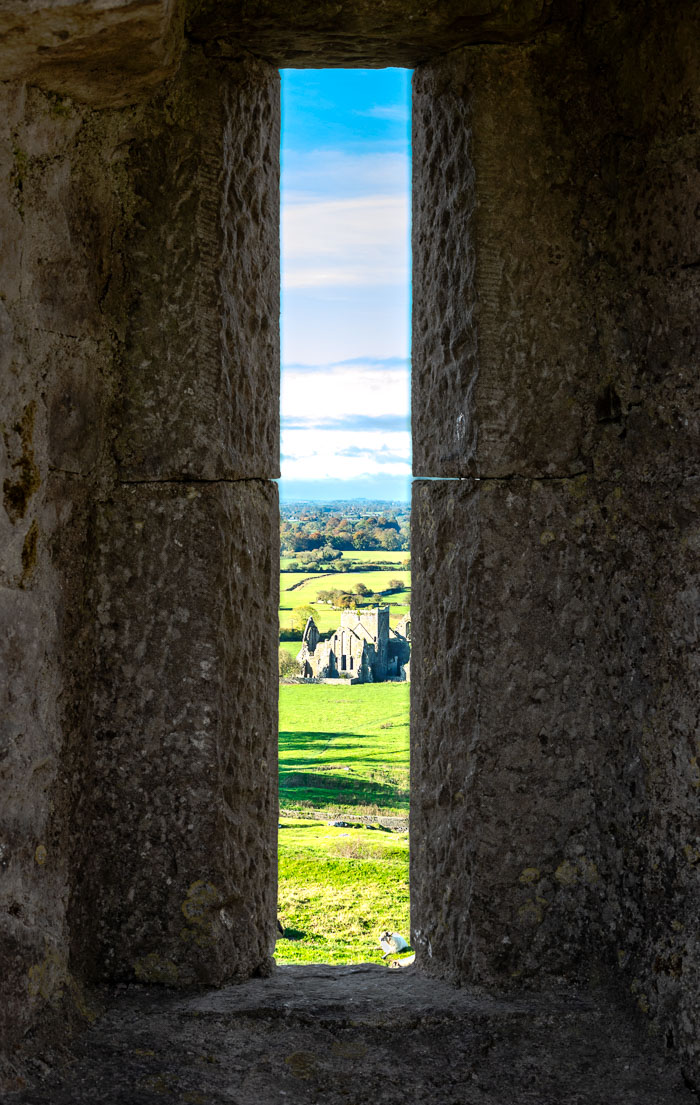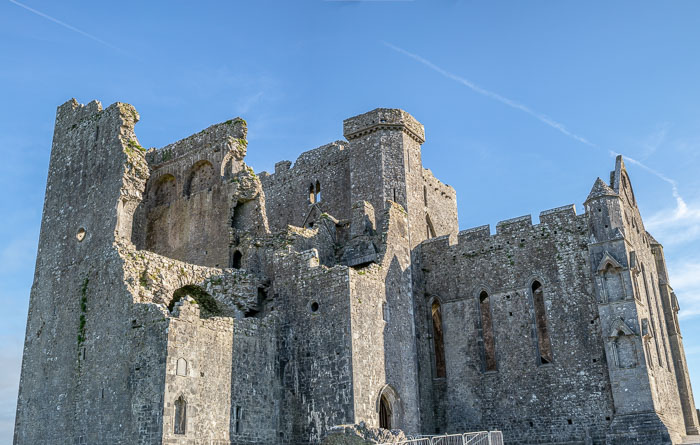Rock of Cashel
The Rock of Cashel (Irish: Carraig Phádraig), also known as Cashel of the Kings and St. Patrick's Rock, is a historic site located at Cashel, County Tipperary. The Rock of Cashel was the traditional seat of the kings of Munster for several hundred years prior to the Norman invasion. In 1101, the King of Munster, Muirchertach Ua Briain, donated his fortress on the Rock to the Church. The picturesque complex has a character of its own and is one of the most remarkable collections of Celtic art and medieval architecture to be found anywhere in Europe.[2] Few remnants of the early structures survive; the majority of buildings on the current site date from the 12th and 13th centuries.
Cormac's Chapel, the chapel of King Cormac Mac Carthaigh, was begun in 1127 and consecrated in 1134. It is a sophisticated structure, with vaulted ceilings and wide arches, drawing on contemporary European architecture and infusing unique native elements. The Irish Abbot of Regensburg, Dirmicius of Regensburg, sent two of his carpenters to help in the work and the twin towers on either side of the junction of the nave and chancel are strongly suggestive of their Germanic influence, as this feature is otherwise unknown in Ireland. Other notable features of the building include interior and exterior arcading, a barrel-vaulted roof, a carved tympanum over both doorways, the magnificent north doorway and chancel arch. It contains one of the best-preserved Irish frescoes from this time period. The Chapel was constructed primarily of sandstone which has become waterlogged over the centuries, significantly damaging the interior frescoes. Restoration and preservation required the chapel be completely enclosed in a rain-proof structure with interior dehumidifiers to dry out the stone. It has been completely cleaned and restored.
Visible over (and through) the walls is Hore Abbey
